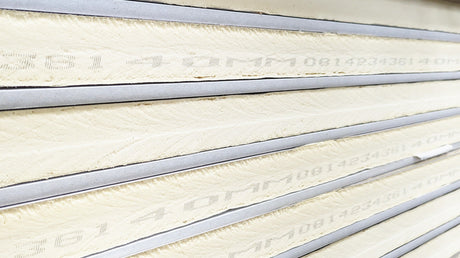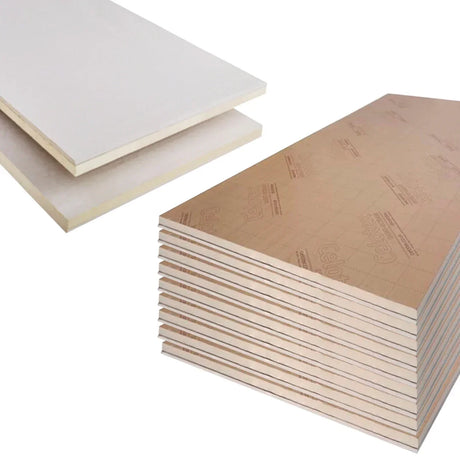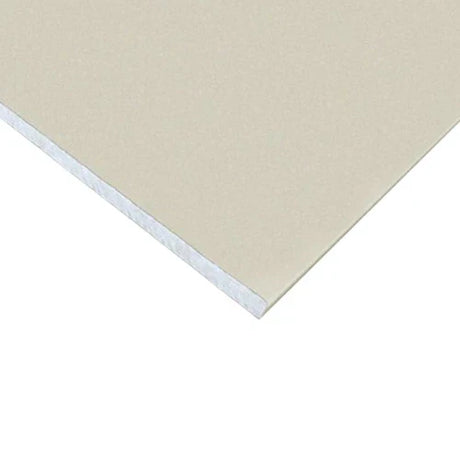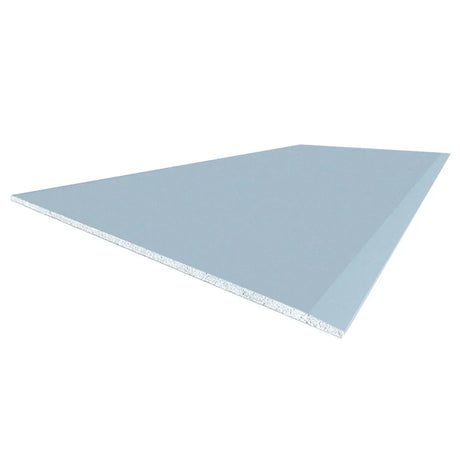Understanding the critical role of damp proofing, VCLs, and breathable membranes in modern construction
Moisture control represents one of the most critical aspects of any construction or renovation project, yet it remains one of the most misunderstood elements in building design. At DIY Building Supplies, we've witnessed countless projects where inadequate moisture management has led to costly remedial work, compromised structural integrity, and disappointed homeowners. The reality is stark: without proper vapour and damp management systems in place, even the most well-intentioned builds become vulnerable to mould growth, timber rot, and catastrophic insulation failure.
The consequences of poor moisture control extend far beyond immediate structural concerns. Modern homes, with their improved thermal efficiency and reduced air permeability, create unique challenges for moisture management that didn't exist in traditional construction. Today's builders and DIY enthusiasts must navigate complex interactions between internal humidity levels, external weather conditions, and building fabric performance. This sophisticated understanding has never been more crucial, particularly as building regulations continue to evolve towards ever-higher performance standards.
This comprehensive guide examines why Vapour Control Layers (VCLs) and building membranes form the backbone of effective moisture management, how these systems work in practice, and where to deploy them for maximum effectiveness. Whether you're embarking on a loft conversion in Manchester, renovating a Victorian terrace in London, or constructing a new-build extension in Edinburgh, understanding these principles will protect your investment and ensure long-term building performance.
What Is a Vapour Control Layer (VCL)?
A Vapour Control Layer represents a sophisticated yet elegantly simple solution to one of construction's most persistent challenges: preventing internal moisture from penetrating building structures where it can cause damage. Essentially, a VCL consists of a thin plastic or foil sheet, typically ranging from 125 to 500 microns in thickness, installed strategically on the warm side of insulation to create an effective barrier against water vapour migration. Leading UK manufacturers like Actis, Kingspan, and Pro Clima have developed increasingly sophisticated VCL products that combine exceptional vapour resistance with ease of installation and long-term durability.
The science behind VCL operation relies on understanding how water vapour behaves in different temperature and humidity conditions. Warm air naturally holds more moisture than cold air, creating a driving force that pushes water vapour from warm, humid internal spaces towards cooler external conditions. Without intervention, this moisture-laden air penetrates through gaps, cracks, and permeable materials, eventually reaching the dewpoint temperature where it condenses into liquid water within the building structure. This condensation process can occur within wall cavities, roof spaces, or floor constructions, leading to significant problems over time.
The strategic placement of VCLs interrupts this moisture migration process by creating a controlled barrier that prevents water vapour from reaching vulnerable areas of the building structure. Modern VCL products achieve vapour resistance values exceeding 200 MN·s/g, effectively blocking moisture movement while maintaining flexibility and workability during installation. This high-performance approach ensures that internal humidity levels can be maintained for occupant comfort whilst protecting the building structure from moisture-related damage. The key lies in understanding that VCLs don't simply block moisture—they redirect it towards controlled ventilation paths where it can be safely removed from the building.
Understanding Building Membranes: The Complete Moisture Management System
Building membranes encompass a sophisticated family of products designed to manage moisture in various forms and locations throughout the building envelope. Breathable membranes represent perhaps the most innovative development in this field, engineered to allow trapped moisture vapour to escape from building structures whilst simultaneously blocking liquid water ingress from external sources. Leading British manufacturers such as Klober, Cromar, and Monarflex have pioneered advanced polymer technologies that achieve this seemingly contradictory performance through precisely controlled microporous structures.
The operating principle of breathable membranes relies on the fundamental difference between water vapour molecules and liquid water droplets. These sophisticated materials feature microscopic pores that readily permit the passage of individual water vapour molecules whilst blocking larger liquid water droplets driven by wind or gravity. This selective permeability enables building structures to 'breathe', allowing any moisture that penetrates the inner layers to escape harmlessly rather than accumulating within the construction. Modern breathable membranes achieve breathability ratings of 1,000-3,000 g/m²/24h whilst maintaining excellent water resistance under challenging exposure conditions.
Damp Proof Membranes (DPMs) serve a distinctly different but equally crucial function in comprehensive moisture management strategies. These heavy-duty polymer sheets, typically manufactured from 1000-1200 gauge polyethylene or specialist polymer compounds, create impermeable barriers against rising damp and ground moisture. Unlike breathable membranes, DPMs are designed to provide complete moisture exclusion, preventing capillary action from drawing ground moisture into building structures. Their robust construction enables them to withstand the demanding conditions found below concrete slabs, in basement constructions, and at ground-bearing floor interfaces, where long-term reliability is essential for building performance.
The successful integration of different membrane types creates comprehensive moisture management systems that address multiple moisture sources and pathways. This layered approach ensures that buildings remain dry and healthy whilst maintaining optimal thermal performance and structural integrity throughout their service life.
The Critical Importance of Moisture Management in Modern Construction
The implications of inadequate moisture management extend far beyond surface-level concerns, fundamentally affecting building performance, occupant health, and long-term structural integrity. When moisture control systems fail or are inadequately specified, the consequences cascade through multiple building systems with devastating effect. Insulation materials, whether mineral wool from Knauf, PIR boards from Celotex, or natural products from Steico, lose their thermal effectiveness dramatically when saturated with moisture. A typical mineral wool insulation with just 1% moisture content by volume can see its thermal conductivity increase by 5-10%, effectively negating the energy efficiency benefits that justified its installation.
Structural implications prove even more serious, particularly in timber-framed construction where moisture content exceeding 20% creates ideal conditions for fungal decay. British Standard BS 5268 clearly defines the moisture content thresholds that ensure timber durability, yet inadequate vapour control regularly pushes structural timbers beyond these safe limits. The resulting decay doesn't simply compromise structural integrity—it creates safety hazards that can render buildings uninhabitable. Even steel-framed structures suffer significant problems when moisture control fails, with corrosion rates accelerating dramatically in high-humidity environments, particularly where condensation provides continuous moisture sources.
Indoor air quality represents another critical concern where moisture management directly impacts occupant health and wellbeing. Mould growth, which thrives in humid conditions above 70% relative humidity, releases spores and mycotoxins that trigger respiratory problems, allergic reactions, and other health issues. The Health and Safety Executive recognises moisture-related mould growth as a significant workplace and domestic health hazard, making effective moisture control not just a building performance issue but a legal and moral obligation for building owners and designers.
During colder months, these problems intensify as internal heating systems create greater temperature differentials between indoor and outdoor conditions. Warm indoor air, capable of holding substantial amounts of water vapour, seeks to migrate towards cooler external conditions. Without effective vapour control systems, this moisture-laden air penetrates building structures where it encounters cold surfaces and condenses, often in locations where detection and remediation prove difficult and expensive. The interstitial condensation that results can accumulate over heating seasons, creating substantial moisture loads that overwhelm natural drying mechanisms and lead to serious building defects.
Strategic Deployment: Where and When to Use VCLs and Membranes
Understanding the correct application of Vapour Control Layers requires recognising the fundamental principle that these barriers must always be positioned on the warm side of insulation systems. In heated buildings, this typically means installing VCLs on the internal face of wall, roof, or floor constructions, between the insulation layer and the interior finishing materials. This positioning ensures that warm, humid internal air encounters the vapour barrier before reaching the cooler insulation zone where condensation would otherwise occur. Leading UK suppliers like Wraptite and Protect Membranes provide comprehensive technical guidance to ensure correct positioning in various construction types.
Wall constructions present particular challenges for VCL installation, especially in retrofit situations where existing structures may not have been designed with vapour control in mind. In timber-framed walls, the VCL typically installs between the internal insulation and the plasterboard lining, creating a continuous barrier across the entire internal surface. Masonry cavity walls require more nuanced approaches, with VCLs often integrated with internal wall insulation systems or installed as separate layers depending on the specific construction approach. The key lies in maintaining continuity across the entire building envelope, ensuring that thermal bridges and service penetrations don't compromise the vapour barrier's effectiveness.
Breathable membranes serve the opposite function, positioned on the external side of insulation systems where they can facilitate moisture escape whilst blocking external moisture ingress. In pitched roof constructions, these membranes typically install beneath roof tiles or slates, supported by counter-battens that maintain essential ventilation gaps. Manufacturers like Klober and Cromar have developed specialised fixings and detailing systems that ensure these membranes perform effectively even under severe exposure conditions. The breathable membrane's positioning allows any moisture that penetrates the inner vapour control layer to escape harmlessly, preventing accumulation within the roof structure.
Damp Proof Membranes require different positioning strategies, focused on preventing ground moisture from entering building structures through capillary action or direct contact. Below concrete ground-bearing slabs, DPMs typically install on a prepared sand blinding layer, with careful attention to maintaining continuity with vertical damp proof courses in adjacent walls. Leading manufacturers like Visqueen and Polythene UK provide comprehensive systems that include specialist jointing tapes and sealants to ensure complete moisture exclusion. The robust nature of these membranes enables them to withstand the challenging installation conditions typical of groundwork operations whilst maintaining their moisture-excluding properties throughout the building's service life.
Selecting High-Performance Products: Key Features and Specifications
Vapour Control Layers demand specific performance characteristics that distinguish professional-grade products from basic alternatives. High vapour resistance, measured in MN·s/g (mega Newton seconds per gram), represents the primary performance criterion, with professional applications typically requiring values exceeding 200 MN·s/g to ensure effective moisture exclusion. Leading manufacturers like Pro Clima and Actis achieve these performance levels through sophisticated polymer formulations and manufacturing processes that create dense, uniform barrier structures. Foil-backed options provide enhanced performance by combining vapour resistance with radiant heat reflection, creating dual-function products that contribute to both moisture control and thermal efficiency.
Mechanical properties prove equally crucial in determining long-term performance and installation success. Tear resistance, typically measured according to BS EN 12310-1, must exceed minimum thresholds to withstand the stresses encountered during installation and throughout the building's service life. Flexibility characteristics ensure that VCLs can accommodate building movement and thermal expansion without compromising their barrier properties. Modern products from suppliers like Kingspan and Isover incorporate plasticiser technologies that maintain flexibility even at low temperatures, ensuring reliable performance throughout the British climate range.
Breathable membranes require a delicate balance between water resistance and vapour permeability, achieved through sophisticated microporous technologies. Water resistance, tested according to BS EN 1928, must provide reliable protection against wind-driven rain whilst maintaining breathability values typically exceeding 1,000 g/m²/24h. The Sd value (equivalent air layer thickness) provides another crucial specification, with values below 0.1m indicating high breathability suitable for most UK applications. UV resistance becomes particularly important where membranes may be exposed during construction, with leading products from Klober and Cromar providing several months of UV stability to accommodate realistic construction schedules.
Damp Proof Membranes prioritise mechanical strength and chemical resistance above all other properties. Thickness specifications typically range from 1000 to 1200 gauge (0.25 to 0.30mm), providing the robust barrier properties needed for below-ground applications. Puncture resistance, tested according to BS EN 12691, must withstand the aggressive conditions encountered during concrete placement and backfilling operations. Chemical resistance ensures compatibility with concrete alkalinity and ground conditions, preventing degradation that could compromise long-term moisture exclusion. Leading UK manufacturers like Visqueen and Polythene UK provide comprehensive test data demonstrating their products' suitability for demanding construction applications.
Professional Installation: Best Practices for Optimal Performance
The effectiveness of any moisture control system depends critically on installation quality, with even minor defects potentially compromising overall performance. Vapour Control Layer installation requires meticulous attention to continuity, ensuring that the barrier function extends uninterrupted across the entire building envelope. Professional installation begins with careful planning, identifying service penetrations, structural interfaces, and other details that require special attention. Leading suppliers like Wraptite and Protect Membranes provide comprehensive installation guides that detail proven techniques for achieving reliable long-term performance.
Seam treatment represents one of the most critical aspects of VCL installation, with inadequate jointing being a primary cause of system failure. Professional-grade sealing tapes, specifically designed for VCL applications, must be used to create vapour-tight connections between adjacent sheets. These tapes, available from specialists like Pro Clima and Siga, incorporate pressure-sensitive adhesives formulated to maintain their sealing properties throughout the building's service life. The overlap requirements typically specify minimum 150mm joints for horizontal seams and 100mm for vertical connections, though exposure conditions may necessitate wider overlaps for enhanced reliability.
Service penetrations present particular challenges that require careful detailing to maintain vapour barrier continuity. Electrical cables, plumbing services, and ventilation ducts all create potential breach points where specialised sealing systems become essential. Flexible sealing membranes and expanding foam products, designed specifically for vapour barrier applications, enable these penetrations to be sealed effectively without compromising the overall system performance. The key lies in planning these interfaces during the design stage, ensuring that appropriate sealing products and installation access are available when needed.
Breathable membrane installation requires equally careful attention to detail, though the focus shifts towards ensuring adequate ventilation whilst maintaining weather protection. Counter-batten systems, typically using 25mm x 38mm treated softwood, create essential ventilation gaps that enable moisture escape and prevent trapped moisture from compromising the membrane's effectiveness. The membranes themselves must be installed with appropriate sag between rafters, typically 10-15mm, to accommodate thermal movement and prevent tearing under wind loading. Fixing patterns, using galvanised clout nails or specialist membrane fixings, must provide adequate retention whilst avoiding excessive penetrations that could compromise weather resistance.
Protecting Your Investment: The Path to Building Excellence
Moisture control represents one of the most significant threats to building performance, energy efficiency, and occupant comfort in modern construction. The sophisticated interplay between different moisture sources, building materials, and environmental conditions demands comprehensive understanding and careful implementation of proven moisture management strategies. At DIY Building Supplies, our extensive experience supporting both trade professionals and DIY enthusiasts has demonstrated repeatedly that successful moisture control depends on using appropriate combinations of vapour control layers, breathable membranes, and damp proofing systems tailored to specific project requirements.
The long-term benefits of effective moisture management extend far beyond immediate construction concerns. Buildings equipped with properly specified and installed moisture control systems maintain their thermal performance throughout their service life, delivering consistent energy efficiency and occupant comfort. The structural protection provided by these systems prevents costly remedial work and ensures that building investments retain their value over time. From a health perspective, effective moisture control creates healthier indoor environments by preventing mould growth and maintaining optimal humidity levels for occupant wellbeing.
Whether you're insulating a Victorian loft conversion in Bath, constructing a modern extension in Birmingham, or renovating a cottage in the Cotswolds, comprehensive moisture management forms the foundation of successful building performance. The complexity of modern building requirements demands professional-grade materials and expert technical support to ensure optimal outcomes. Don't compromise on the hidden systems that protect everything else—invest in proven moisture control solutions that will safeguard your project for decades to come.
Ready to protect your build from moisture damage?
Discover our comprehensive range of high-performance vapour control layers, breathable membranes, and damp proofing materials from leading UK manufacturers including Pro Clima, Klober, Visqueen, and Kingspan. Our technical team provides expert guidance to ensure you select the right moisture management solution for your specific project requirements.
Shop now at DIYBuildingSupplies.co.uk - Insulation & Membranes Collection
Need technical advice? Contact our Nottingham-based team for professional guidance on moisture control system design and product selection. We're here to help you get it right first time.









